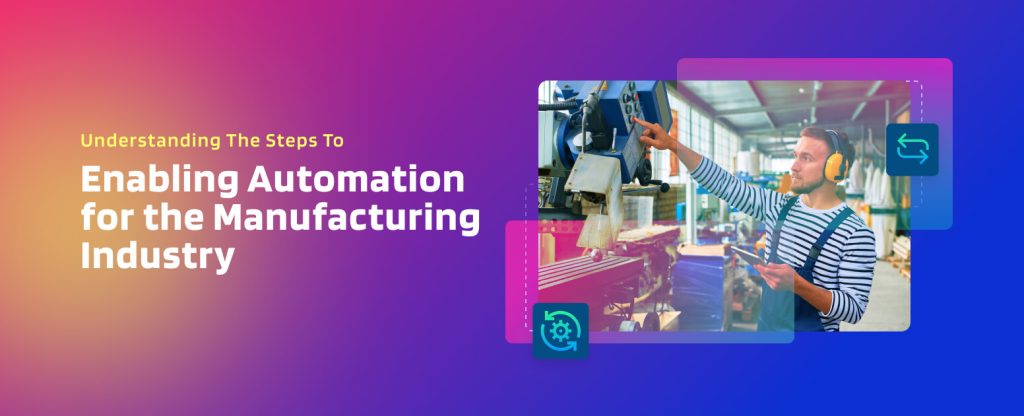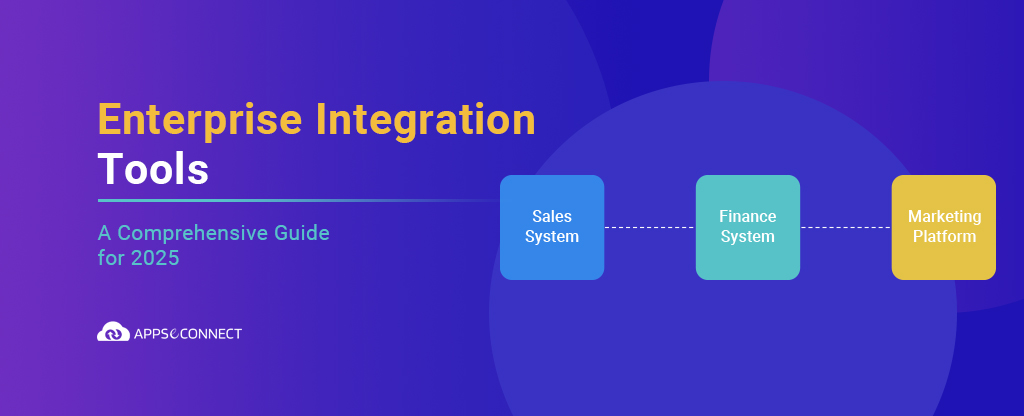With increased connectivity and a shift towards digitalization, the manufacturing industry has a wide range of automation technologies at its disposal. From robotics and Artificial Intelligence (AI) to the Internet of Things (IoT), these technologies can help enable automation for the manufacturing industry and unlock new opportunities that were previously unexplored.
The manufacturing industry has always been at the forefront of technological innovation, with advancements in machinery and automation driving increased efficiency, productivity, and profitability. With the growing significance of business process automation in the manufacturing industry, let us explore the various aspects of automation in the manufacturing industry, including its benefits, the different technologies available, how to identify the right processes to automate, and how to successfully implement and manage automation projects.
Looking to get started with automation for the suite of business applications running in your manufacturing business? Seamlessly connect your entire software stack under a single, intelligent, and secure platform to automate your business processes – implement APPSeCONNECT’s robust integration packages and achieve exponential growth in your business.
Growing Significance of Automation for the Manufacturing Industry
Irrespective of the scale of the enterprise, whether it be small or large, valuable insights are available for anyone seeking to leverage the potential of automation for growth and success.
Widespread adoption of automation trends for the manufacturing industry, such as Robotic Process Automation (RPA), Business Process Automation (BPA), Artificial Intelligence (AI), and the Internet of Things (IoT), has enabled manufacturers to streamline their processes and reduce the risk of human errors. The continued adoption of cutting-edge technologies to exponentially improve efficiency and enable intelligent automation for the manufacturing industry has given rise to what is now known as Industry 4.0. Industry 4.0, also referred to as the Fourth Industrial Revolution, denotes the prevailing movement towards the amalgamation of innovative technologies to enable automation for the manufacturing industry. The objective of Industry 4.0 is to introduce intelligence into the manufacturing industry that exhibits superior efficiency, flexibility, and adaptability in response to the evolving market dynamics.
The global industrial automation market is estimated to reach an estimated 265 billion U.S. dollars, with a major focus on achieving sustainability, addressing skill deficiencies, and gaining a competitive advantage through the implementation of automation in the manufacturing industry. One of the core benefits offered by automation includes reduced costs and improved efficiency. By using machines and robots to perform repetitive tasks, manufacturers can cut costs on overhead expenditures, and reduce the risk of injuries on the job. Another benefit of automation is improved quality control. With automated machines, manufacturers can ensure consistency in product quality, which results in fewer defects and less waste. Additionally, automation can increase production capacity, allowing manufacturers to produce more products in less time. This increased productivity can lead to a reduction in lead times and faster response time to customer demands.
Furthermore, automation can improve safety in the manufacturing industry. By taking over hazardous and dangerous tasks, such as handling heavy machinery or toxic materials, automated systems can protect workers from injury and illness. Automated systems can also provide real-time data analysis, which enables manufacturers to identify and address issues in real time. This can help prevent costly errors and reduce downtime. Thus, the growing advantages offered by automation for the manufacturing industry make it prudent for business decision-makers to identify the key areas to enable automation across their enterprise to achieve faster scalable growth.
Steps to Enable Automation for the Manufacturing Industry
The manufacturing industry presents vast opportunities for automation due to its potential to streamline and perfect the production process. Automation for the manufacturing industry can take different forms, ranging from production line automation to inventory management, predictive maintenance, material handling, quality control, and data analytics. The steps to enable automation for the manufacturing industry are listed below.
Identifying the Areas of Automation for the Manufacturing Industry
There are many workflows within the manufacturing industry where automation can be utilized to tap into previously unexplored opportunities. These areas can be considered the core focus of automation within the industry. Some of these areas for automation include:
Production Line Automation
Production line automation for the manufacturing industry involves implementing technology, including robotics, sensors, and artificial intelligence, to perform various tasks such as assembly, packaging, and quality control. The production line automation process uses predefined commands to regulate the various systems deployed throughout the manufacturing pipeline. Automation allows for the effective management of raw materials, processing, and production of the final product with minimal human intervention. With the integration of the implemented technologies, manufacturers can address the growing labor shortage, improve time to market and ensure product consistency.
Vendor and Customer Communication Automation
For the manufacturing sector, having effective B2B communication channels for both vendors and customers is necessary for maintaining strong relationships and succeeding in today’s competitive market. The process of communicating daily with vendors’ customers and internal employees requires a lot of manual work. Customer service representatives may often need to manually search for emails, track shipment statuses in the ERP system, provide updates to customers, and close cases. The implementation of automation between business communication platforms and ERP applications can enhance monitoring and collaboration by simplifying the entire process of transferring data between the two applications.
Inventory Management Automation
With the growing demand and competition in the market, it has become essential to have real-time monitoring of inventory levels. Inventory management automation involves the use of software and other technologies to track and manage inventory levels, automate reordering, and monitor stock levels in real time. By adopting an automated approach to inventory management, manufacturers can reduce the need for human intervention while maintaining optimal stock levels. Additionally, implementing inventory management automation for the manufacturing industry offers valuable insights into business patterns, and internal operations to help uncover potential bottlenecks in the supply chain.
Quality Control Automation
Quality control within the manufacturing processes is another area where automation can help improve and streamline procedures across the industry. The benefits of quality control automation for the manufacturing industry include improved accuracy of inspections, as machines are less prone to errors as compared to human inspection. It reduces the chance of defects and improves the quality of the final product. Furthermore, quality control automation can help to standardize the quality control process, ensuring that inspections are consistent and reliable across all products. This can help to build customer trust and enhance the reputation of the manufacturer.
Predictive Maintenance Automation
With the near complete reliance on machinery by the manufacturing industry, predictive maintenance has become increasingly more important as it offers several benefits over traditional reactive and preventive machinery maintenance approaches. Automating predictive maintenance involves using sensors, machine learning algorithms, and data analytics to predict and prevent equipment failures and unplanned downtime. With automation, manufacturers gain real-time monitoring of machinery to detect abnormalities in equipment performance and identify potential failures before they occur. Based on the insights obtained from real-time analytics, manufacturers can create predictive maintenance plans for specific equipment components or production processes. This helps in identifying the right maintenance strategy for each asset, reducing downtime and costs.
Choosing the Right Automation Technology
Choosing the right automation solution for the manufacturing industry can be a complex process, as there are many different technologies available, each with its own set of advantages and disadvantages. When choosing the right automation technology, there are several factors that an enterprise should consider.
Firstly, enterprises need to identify the specific business processes that require automation and determine their specific requirements and challenges, including the complexity of the tasks, the volume of work, and the level of human intervention needed. Secondly, the automation platform should be able to deliver full-stack integration with all other existing business systems and applications, such as CRM or ERP, to provide a seamless workflow. Furthermore, it is important to ensure that the automation technology is customizable to the enterprise’s specific needs and offers scalability, to parallelly evolve to handle the increase in the volume of work and the complexity of the tasks as the business grows.
A wide range of automation tools exists within the market that can offer the range of features that manufacturers may need to improve their production efficiency. However, investing in a ready business process automation (BPA) platform like APPSeCONNECT can be more beneficial than building custom integration from scratch. Some benefits offered by such a platform include:
Faster Time-to-Market: Pre-built connectors, data transformation tools, and integration flows offered by low code BPA platforms enable quick integration of applications, reducing time-to-market for manufacturers.
Reduced Cost: Building custom integration requires dedicating significant time and resources from enterprises that they may not have. However, a ready integration platform with pre-built connectors can deploy the required integration right out of the box and reduce the cost of building an integration solution from scratch.
Ease of Use: Low-code, intuitive BPA platforms offer user-friendly interfaces and drag-and-drop visual integration designer tools that make it easier for businesses to design, deploy and manage their integrations, even without technical expertise.
Scalability: A ready integration platform offers unparallel scalability and flexibility, allowing businesses to add new applications to their software stack easily as their needs change, helping them to grow and expand without being limited by their current technological infrastructure.
Reliability: Built-in monitoring and logging capabilities with a BPA platform can help businesses track data flow and quickly identify and resolve any issues that arise, making it a reliable option.
Futureproofing: Investing in a ready integration platform can help businesses adapt to recent technologies and stay competitive in a rapidly evolving business landscape by enabling them to add new applications or endpoints easily as their needs change.
Preparing for Future Trends in Manufacturing Automation
Preparing for future trends in automation for the manufacturing industry requires a combination of staying informed about emerging technologies, developing skills in areas of demand, and adopting a mindset that embraces change and continuous learning. Automation through robotics is quickly becoming a major tool for manufacturers across the industry, allowing complex workflows to be carried out with greater efficiency, agility, consistency, and safety. Considering the current trend of technological advancements, the future of manufacturing automation will be primarily driven by Artificial Intelligence (AI), Robotic Process Automation (RPA), Machine Learning, and the Internet of Things (IoT).
Another emerging trend that will become more prominent in manufacturing automation will be 3D printing. As 3D printing technology continues to become more affordable, efficient, and scalable, manufacturers are expected to adopt it more widely to automate production that requires fewer materials and produces less waste than traditional manufacturing methods. The rise of faster, automated production through 3D printing is also likely to bring in a new era of personalization, as manufacturers can create customized products without worrying about the challenges of economies of scale. The use of 3D printing to design sophisticated prosthetics is already becoming a major trend, that requires several complex customizations to fit perfectly to the requirements of the end user. Additionally, 3D printing’s ability to facilitate rapid prototyping is likely to drive innovation in the manufacturing industry.
A common fear within the industry is that automation and technology will replace humans, leading to mass unemployment. However, the need for humans will continue to remain a mandatory aspect of the manufacturing pipeline. The core trend around implementing automation for the manufacturing industry will be to offload bulk repetitive tasks to machines for faster, error-free processing and free up human resources for more complex processes. Furthermore, automation and robotics will be used to take over more potentially hazardous tasks to allow humans to focus on roles that are safer, less strenuous, and more focused on creativity, problem-solving, people management, and innovation.
The Future of Manufacturing, Powered by Automation
The manufacturing sector has undergone several advancements over the years and continues to evolve significantly through new breakthroughs in technologies and automation. Enabling automation in the manufacturing industry requires a comprehensive understanding of the processes and tasks that are best suited for automation and identifying the tools best suited for enabling that automation. It is essential to assess and prioritize the tasks that can be automated for maximum efficiency, safety, and cost-effectiveness. This requires a proactive approach to change management, collaboration across different teams, and investment in the necessary infrastructure, technology, and training. By embracing automation for the manufacturing process, businesses can achieve greater productivity, quality, and profitability while enhancing employee safety and job satisfaction. With the right strategy and execution, the manufacturing industry can fully leverage the complete spectrum of benefits provided by automation and drive faster scalable growth into the future.
Looking to get started with automation for the suite of business applications running in your manufacturing business? Seamlessly connect your entire software stack under a single, intelligent, and secure platform to automate your business processes – implement APPSeCONNECT’s robust integration packages and achieve exponential growth in your business.





















